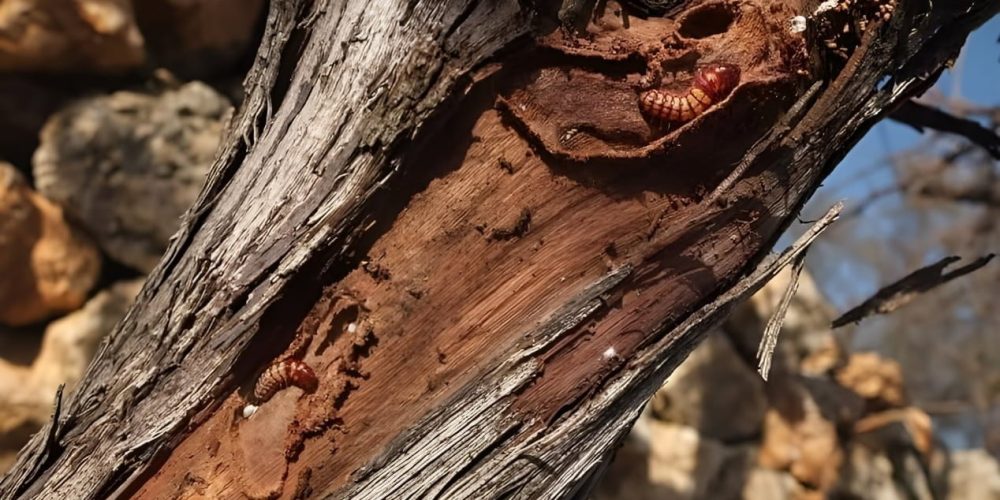Table of contents of the article
ToggleThe grape branch borer is a pest that infects grape vines, causing branches to deteriorate and productivity to decline. In this article on your website, World of Plants, we will learn about how to deal with this insect and ways to prevent it.
Symptoms of grape branch borer
- Scientific name : Schistocerus bimaculatus
- Type of disease : Insect
- the family : Coleptera
- Puncturing the branches and destroying the buds.
- Infected branches break due to holes made by males and females for breeding.
- Dryness of branches older than one year
- There are fully circular holes at the bases of branches or buds. There are often round-sectioned tunnels in the stem area that are filled with wood shavings containing semi-curved white larvae. In winter, there are 9-12 mm beetles in the hole. On the first chest there is a gray spot with two black spots in the middle.
- The adult insect makes tunnels over the buds in the winter, and in the spring it begins to dig into the bark and then the wood. They mate and lay eggs on the perimeter of the tunnel, and when the larvae hatch, they dig tunnels in the wood filled with sawdust.
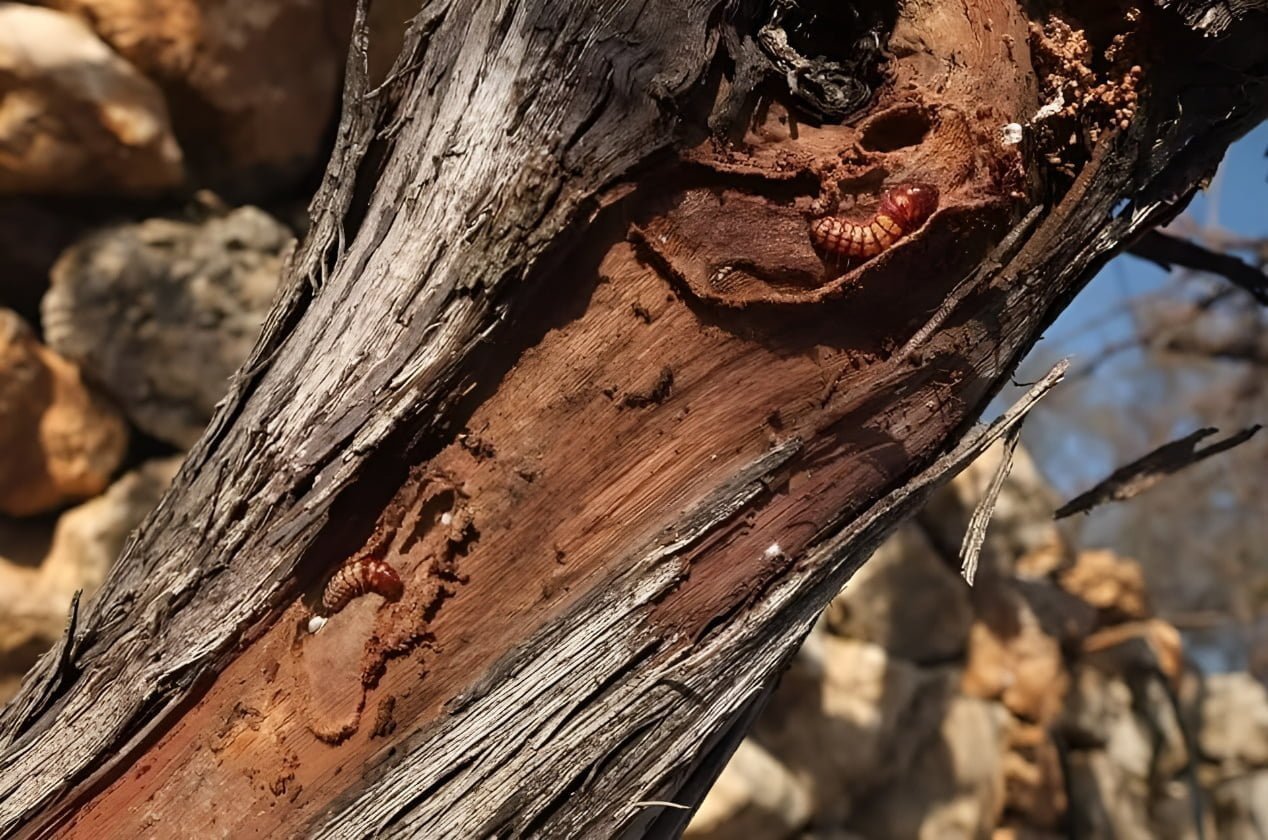
Description of the grape branch borer insect
- A small, black insect. On both sides of the first thoracic ring, there are two gray spots, each with two black spots in the middle. The abdomen has dense gray hairs.
- The legless worm larvae have a brown head and first thorax, and the general body color is yellowish white.
- The pupa is of the free type and is found at the end of the breeding tunnel.
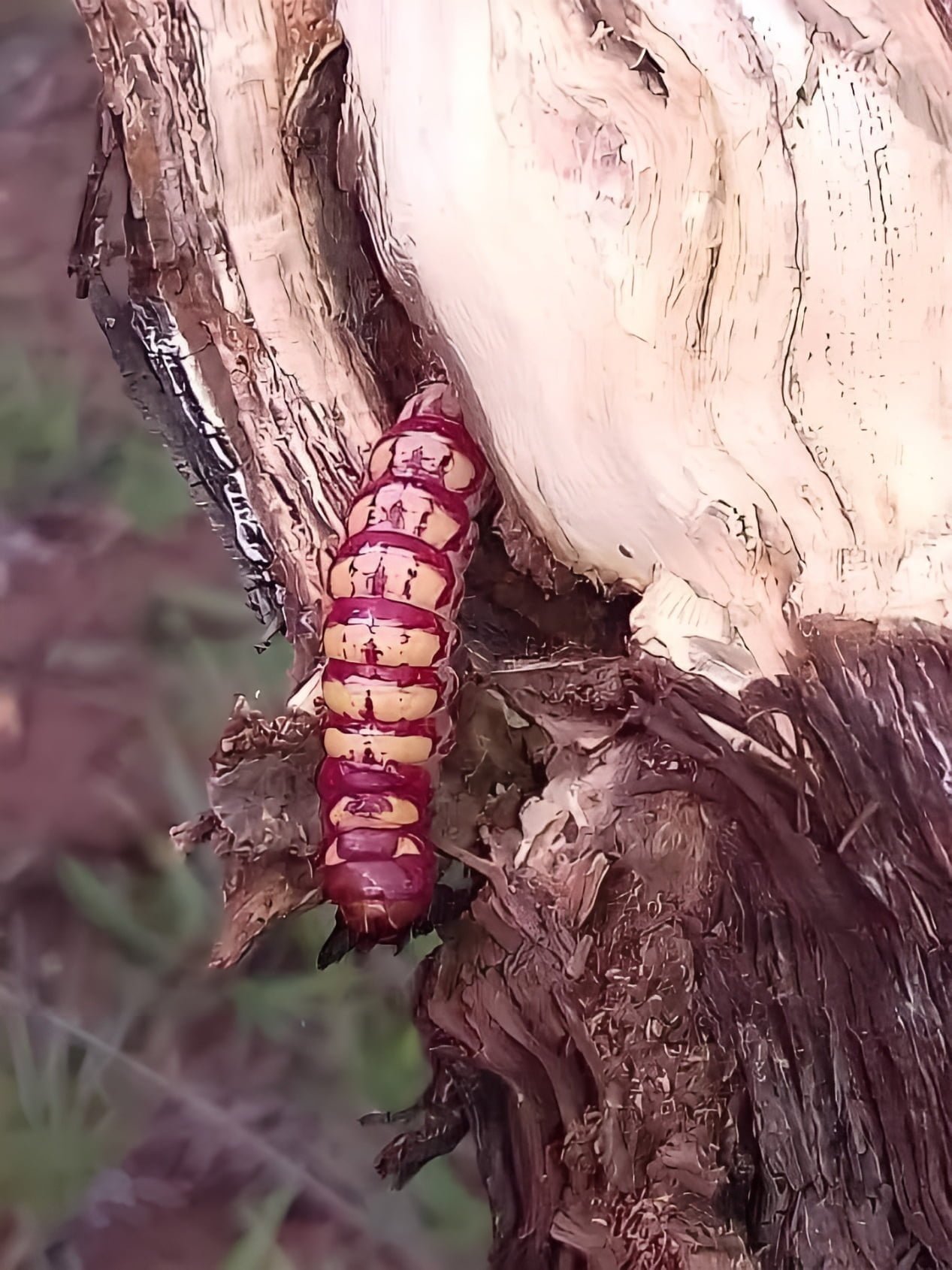
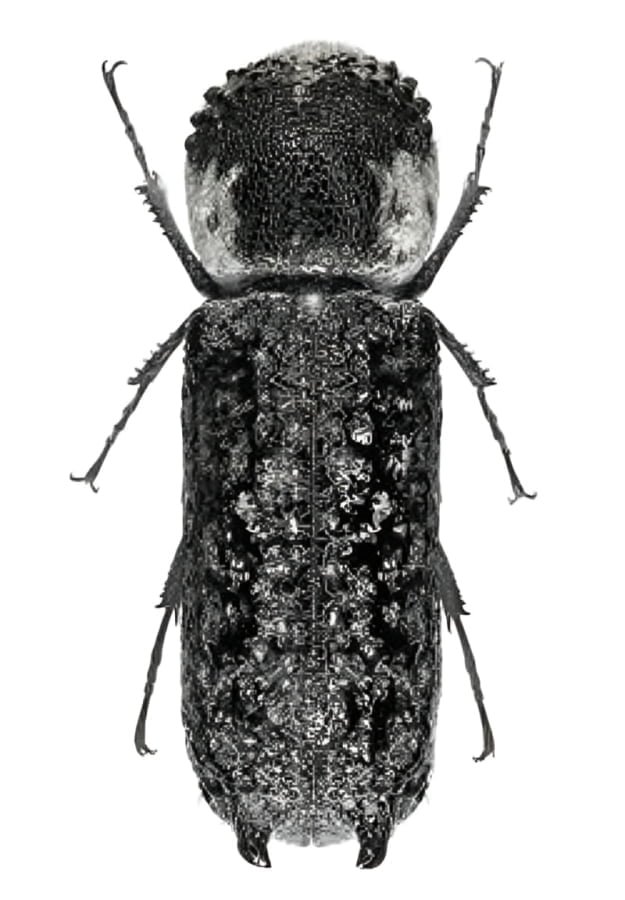
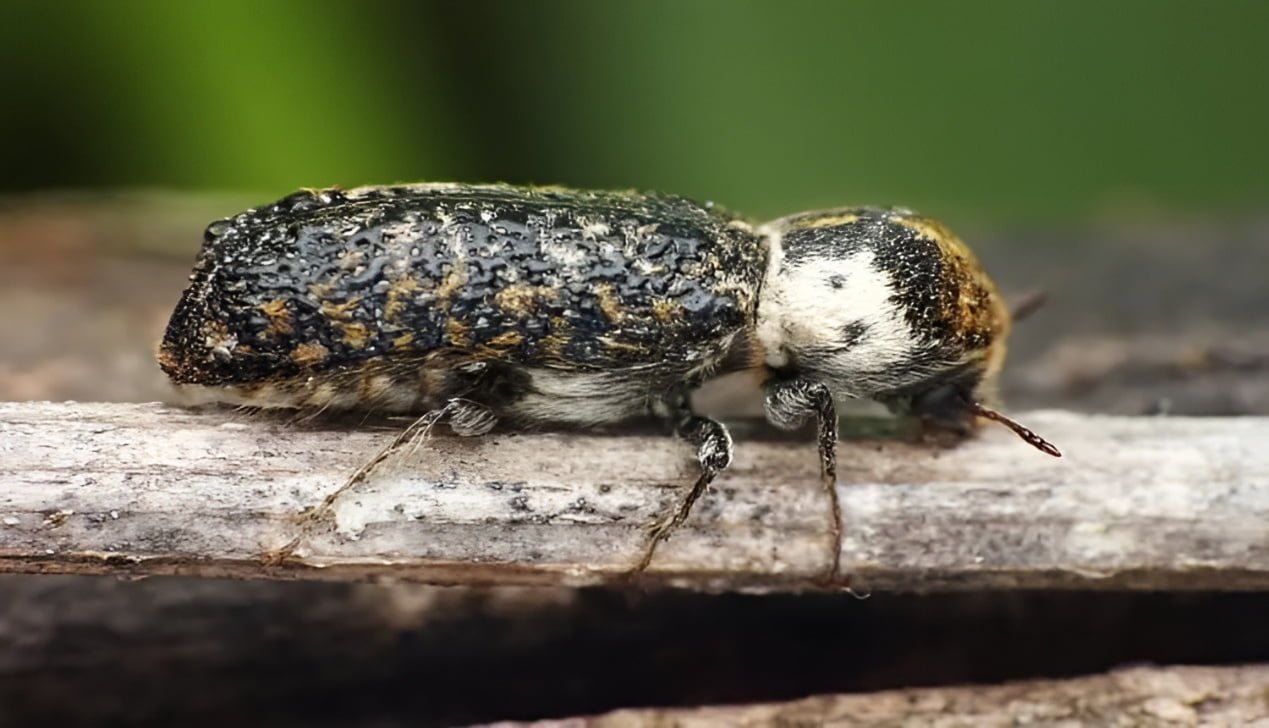
Causes of grape branch borer
- The hosts of this insect are apples, almonds, figs, citrus fruits, and acacia. Therefore, the presence of infected fields next to grapes can transmit the infection.
- The soil is poor in nutrients and lack of fertilizer, and thus the trees are weak and have little ability to resist.
- Lack and irregular irrigation during the egg-laying period
- The farmer neglected proper pruning operations
- Farmers follow an incorrect cultivation method that encourages this pest (such as planting vegetables and small crops between grape trees).
- There are many holes from which sawdust comes out mixed with the feces of the larvae inside the tunnels.
- High temperatures.
Suitable conditions for the spread of the grape branch borer
- Temperature above 20°C and precipitation
- Cultivation of a sensitive and non-resistant variety
- Heavy irrigation.
The development cycle of the grape branch borer
- The grape branch borer spends the winter as adult insects that reside in tunnels in the branches.
- Adults or beetles can also be found in the spring as well.
- Beetles are often active in late spring and begin tunneling into the bark, producing fine mulch.
- After that, the beetles move to the wood area and burrow there as well.
- Females and males mate, then the females lay eggs along and around the tunnel.
- The larvae turn into pupae and then into adult insects and repeat the life cycle.
Losses from the spread of the grape branch borer
Plants weaken and lead to the crushing of trees and a decline in the level of agricultural production. They also lead to the attraction of other pests to the vine.
They burrow into the branches of the vine itself and thus threaten the life of the entire plant.
This pest also infects branches and thus threatens agricultural production.
Also, the site of the infection itself weakens and other dangerous pests are attracted to it.
May be attracted to borer pests such as bollard capnoids and apple stem borers.
Sap-sucking pests such as grape mite, red mite, and pear tiger may also be attracted.
Other non-insect pests may also be attracted
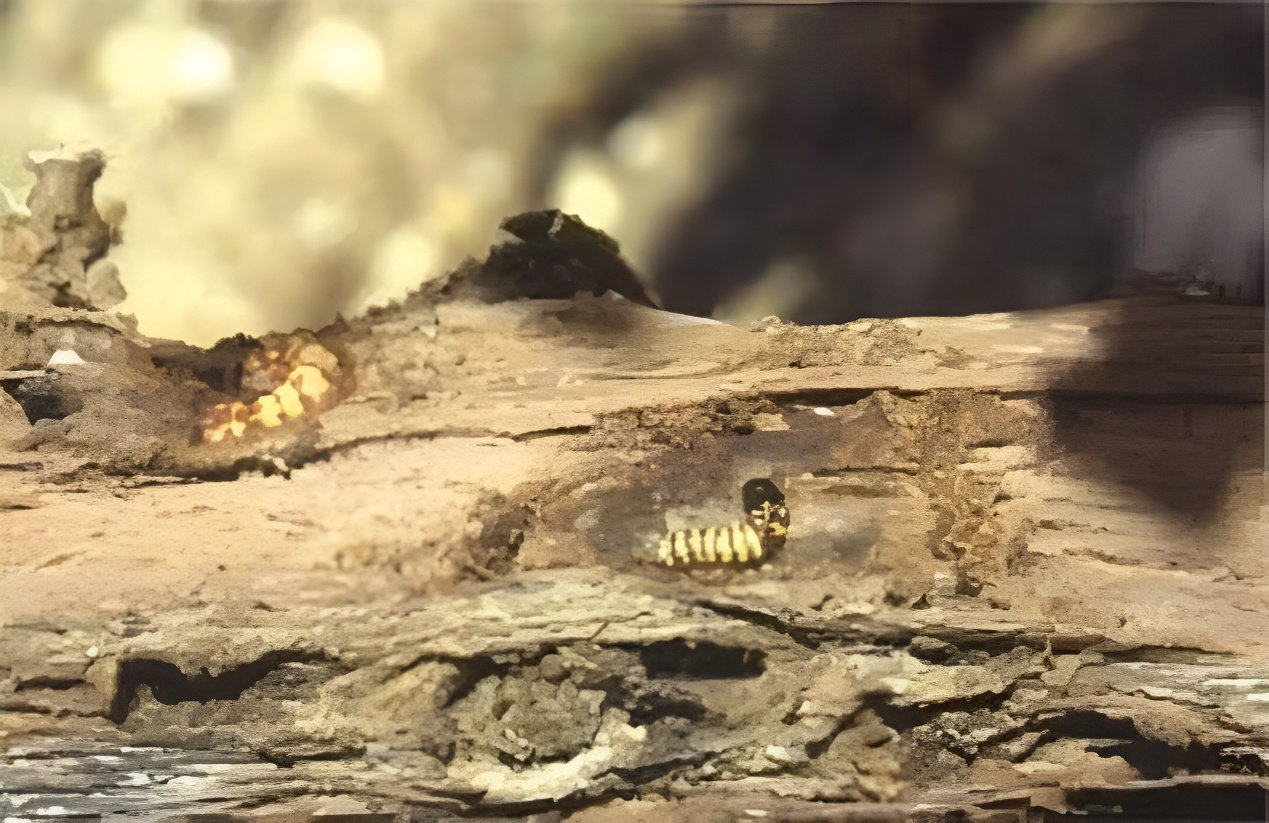
Strategy to combat grape branch borers
Preventive measures to prevent the occurrence of grape branch borer
- Removing the surrounding weeds that accumulate in and next to the orchard, especially infested weeds
- Perform an excavation of the soil to a depth of about 60-70 cm.
- Suitable dimensions for grape plantings must be chosen to avoid density that leads to pest infection. The appropriate distance is 3 m between each row and 1.5 m between each planting.
- Monitor the orchard periodically to ensure it is free of pests, insects and pathogens.
- Pruning dry and infected branches during winter service.
- Adding mineral fertilizers of potash, phosphorus and nitrogen
Chemical and organic control recommendations against grapevine branch borer
- Organic control
- Cover the heels with tallow or Bordeaux paste.
- Using wire to kill larvae inside tunnels.
- Peeling the affected branches and burning the peeling residue.
- Chemical control:
- Use the pesticide Parathion metyhl, or the pesticide Malathion.
- In the event of severe infestation, the trees are sprayed with 50% Cydial compound at a rate of 3 per thousand, equivalent to 300 cubic centimeters / 100 liters of water. Spraying should be done starting in May, and spraying should be done four times, three weeks apart, taking into account stopping the spraying approximately before collecting the fruits. At least a month
In conclusion, we would like to note that we, at the world of plants website, offer you all the necessary services in the world of plants, we provide all farmers and those interested in plants with three main services::-
- Artificial intelligence consulting service to help you identify diseases that affect plants and how to deal with them.
- Blog about plants, plant diseases and care of various crops ... You are currently browsing one of her articles right now.
- An application that provides agricultural consultations to clients, as well as a service for imaging diseases and knowing their treatment for free – Click to download the Android version from Google Play Store، Click to download the IOS version from the Apple App Store.
references:-
- Casilli, O. (1970). Damage to vines caused by the bostrychid Schistocerus bimaculatus. Informatore Fitopatologico, 20(19), 10-11
- Ozgen, I. (2018). New findings” on bostrichus capucinus linnaeus, 1758 (coleoptera: bostrichidae) in Turkey. Fresen Environ Bull, 27, 2829-2833
- Rodríguez‐González, Á., Malvar, R. A., Guerra, M., Sanchez‐Maillo, E., Peláez, H. J., Carro‐Huerga, G., & Casquero, P. A. (2022). Xylotrechus arvicola (Coleoptera: Cerambycidae) capture in vineyards in relation to climatic factors. Pest Management Science, 78(7), 3030-3038
- NEW FINDINGS” ON BOSTRICHUS CAPUCINUS LINNAEUS – researchgate
- Xylotrechus arvicola (Coleoptera: Cerambycidae) capture in vineyards in relation to climatic factors – WILEY ONLINE LIBRARY




